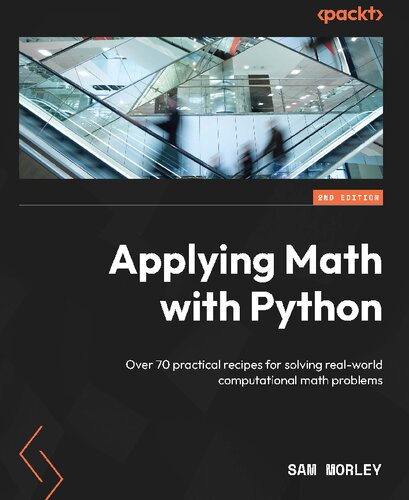

Most ebook files are in PDF format, so you can easily read them using various software such as Foxit Reader or directly on the Google Chrome browser.
Some ebook files are released by publishers in other formats such as .awz, .mobi, .epub, .fb2, etc. You may need to install specific software to read these formats on mobile/PC, such as Calibre.
Please read the tutorial at this link: https://ebookbell.com/faq
We offer FREE conversion to the popular formats you request; however, this may take some time. Therefore, right after payment, please email us, and we will try to provide the service as quickly as possible.
For some exceptional file formats or broken links (if any), please refrain from opening any disputes. Instead, email us first, and we will try to assist within a maximum of 6 hours.
EbookBell Team

4.1
70 reviewsDiscover easy-to-follow solutions and techniques to help you to implement applied mathematical concepts such as probability, calculus, and equations using Python's numeric and scientific libraries
Key Features
Book Description
The updated edition of Applying Math with Python will help you solve complex problems in a wide variety of mathematical fields in simple and efficient ways. Old recipes have been revised for new libraries and several recipes have been added to demonstrate new tools such as JAX.
You'll start by refreshing your knowledge of several core mathematical fields and learn about packages covered in Python's scientific stack, including NumPy, SciPy, and Matplotlib. As you progress, you'll gradually get to grips with more advanced topics of calculus, probability, and networks (graph theory). Once you've developed a solid base in these topics, you'll have the confidence to set out on math adventures with Python as you explore Python's applications in data science and statistics, forecasting, geometry, and optimization. The final chapters will take you through a collection of miscellaneous problems, including working with specific data formats and accelerating code.
By the end of this book, you'll have an arsenal of practical coding solutions that can be used and modified to solve a wide range of practical problems in computational mathematics and data science.
What you will learn